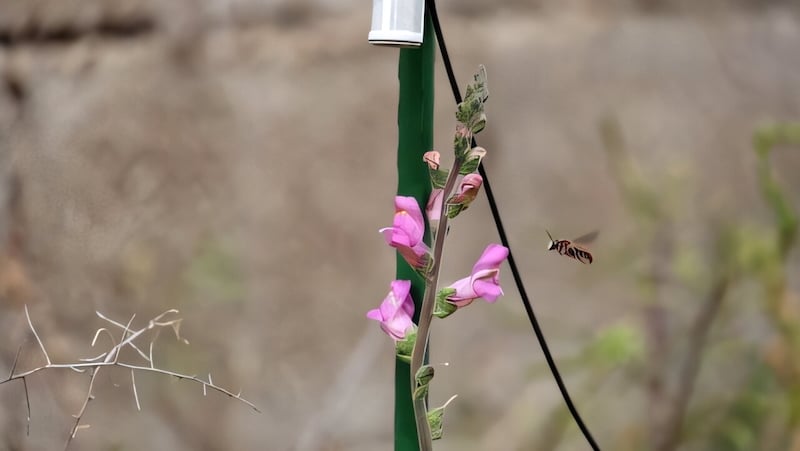This post was originally published on Eco Watch
When plants hear the buzzing of bees collecting nectar, they increase their output of the sugary substance as the bees get closer, a new study by Francesca Barbero, a zoology professor at University of Turin, and a team of researchers from Spain and Australia has found.
The research suggests that plants play more of an active role in the symbiotic relationship they have with bees than previously thought. The plants’ behavior could be a survival tactic that favors giving sustenance to bees over “nectar robbers” who don’t offer them any reproductive benefits, a press release from the Acoustical Society of America said.
“Plant-pollinator coevolution has been studied primarily by assessing the production and perception of visual and olfactory cues, even though there is growing evidence that both insects and plants can sense and produce, or transmit, vibroacoustic signals,” Barbero said in the press release.
Pollinators produce a variety of sounds when they visit flowers — flapping their wings over a flower, hovering, landing and taking off. But these sounds are very small in comparison with other acoustics and vibrations of insect life, which had previously led to researchers overlooking their acoustic signals related to body and wing buzzing.
Barbero and an interdisciplinary team of entomologists, plant physiologists and sound engineers studied the signals to develop efficient and noninvasive methods to monitor pollinator communities and how they influence ecology and plant biology.
Barbero presented the findings on May 21 at the 188th Meeting of the Acoustical Society of America and 25th International Congress on Acoustics.
The team played recordings of buzzing sounds by a Rhodanthidium sticticum bee — also known as a “snail-shell bee” — near growing snapdragons to monitor the plants’ reactions.
A photo of the recording device, the model snapdragon plant (A. litigiousum), and the approaching bee (R. sticticum). Vibrant Lab
They discovered that the sounds of the bees, who are snapdragon pollinators, caused the flowers to ramp up their volume of nectar and sugar, and even change the gene expression governing nectar production and the transport of sugar.
The response by the snapdragons could be a coevolutionary survival strategy, particularly if the plants are able to increase the pollinators’ loyalty by affecting how much time they spend inside their flowers.
“The ability to discriminate approaching pollinators based on their distinctive vibroacoustic signals could be an adaptive strategy for plants,” Barbero said. “By replying to their proper vibroacoustic signal — for instance, an efficient pollinator’s — plants could improve their reproductive success if their responses drive modifications in pollinator behavior.”
The research team is looking into whether the plants’ responses increased the attraction of all visitors to their flowers — including the nectar robbers — or just suitable pollinators.
“Our hypothesis is that the changes in nectar we observed after treating the plants with the sounds of the best pollinators specifically increase the attraction of this particular species (Rhodanthidium sticticum),” Barbero said, as The Guardian reported. “However, to confirm this, we need to conduct choice tests to assess how different nectar concentrations attract various species.”
Barbero said that if they are able to confirm this response from insects, sounds could be used alongside plants and crops to increase the attraction of their specific pollinators.
The researchers are conducting ongoing analyses to compare snapdragon reponses to nectar robbers and other pollinators.
“The multitude of ways plants can perceive both biotic factors — such as beneficial and harmful insects, other neighboring plants — and abiotic cues, like temperature, drought, and wind in their surroundings, is truly astonishing,” Barbero said in the press release.
The post Plants Produce More Nectar in Response to the Sound of Buzzing Bees: Study appeared first on EcoWatch.





0 Comments